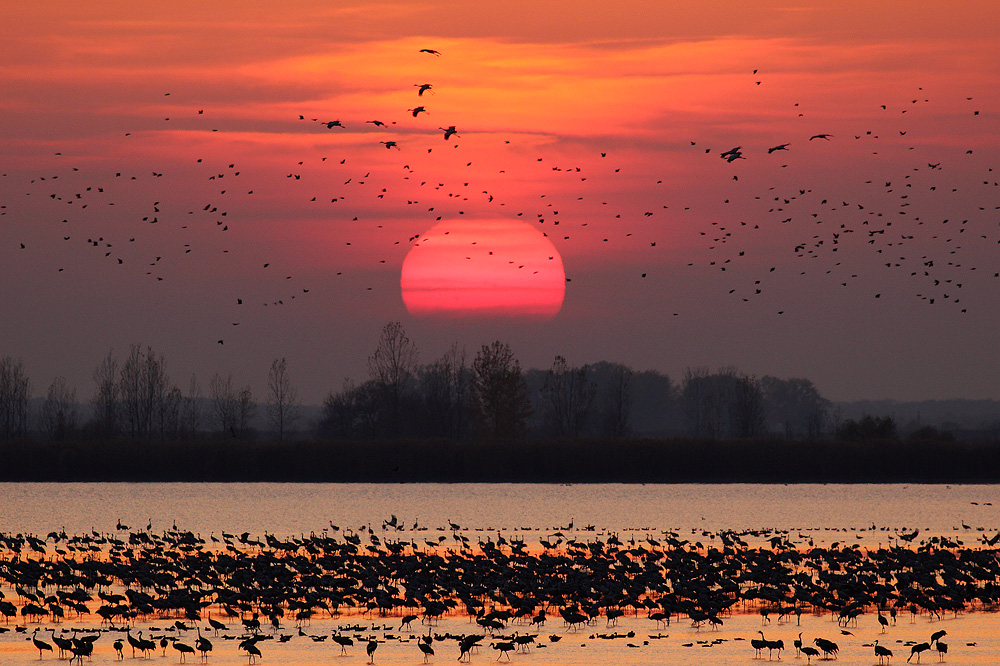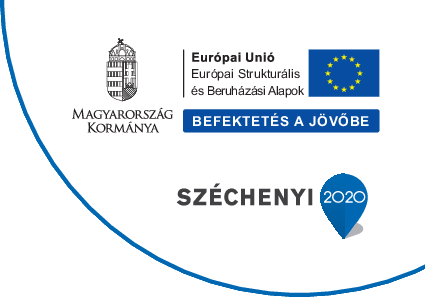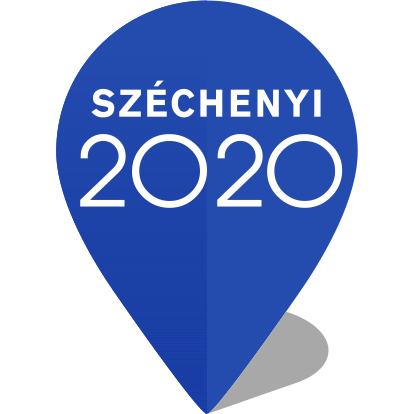The Hortobágy National Park is turning 50
The largest and first established National Park in Hungary will celebrate its 50th anniversary in 2023. On this occasion, we are preparing a series of holiday programs throughout the year. For up-to-date information, follow our website, Facebook and Instagram pages!
The Hortobágy National Park is turning 50 next year. This landmark date gives us the opportunity to took back on the key events of all the nature conservation efforts.

A national park is born - the first 50 years .
The unique beauty of the land has been refleceted in several poets’ writers’ works. It is a land of extremes. One can still sense the life of our nomadic ancestors, their connection to this wonderful, however stingy landscape, thus making the Hortobágy the symbol of the Hungarians’ fate.
The Hortobágy has retained the tangible and intangible heritage of the past millennia. Its natural diversity, the scenic landscape, vernacular traditions represent such a treasure that we should all cherish.
The end of the 1960’s and early 70’s were favourable for the development of environmental and nature conservation.
The so-called ‘Pro Natura’ memorandum was signed by 21 internationally reknown scientists, and this document kickstared the designation of the Hortobágy National Park in order to protect the Hungarian Puszta. The memorandum was submitted to the Hungarian Academy of Sciences and the Government. After overcoming numerous obstacles, the Hortobágy Nationa Park was finally designated on 1 January 1973.
Leading scinetific institutes were involved in the complete survey of the plant and animmal life ad the ecology of the area that also enabled the newly formed managing organization staff in pursuing their responsibilities in land management.
The extensive work prior to the national park designation had revealed that wetlands were the most vulnerable habitats of all. As a result, the water supply system of the Kunkápolnás Marsh was constructed, and further plans were forged to revitalize the most important marshes.
The designation of the National Park, and the preparatory works attracted the attention of European scientists resulting in a broadening international cooperation.
The economic structures of the 70-80’s were very much against land use forms most compatible with and favourable for nature conservation, primarily grazing. Two strategic agricultural programmes were in place, i.e. intensive sheep and waterfowl (geese) husbandry, both inducing grave conflicts for nature conservation.
The political changes of 1989 brought new challenges, but the Act on the Restoration of Nature Conservation Levels resolved the conflicts between agriculture and nature conservation. It did so by granting rights to the national park management to acquire former cooperative farmlands and state-owned lands, and if necessary to appropriate certain areas. As a result, the majority of the national park area has become state owned trusted to the management of the Hortobágy National Park Directorate.
The Hortobágy National Park Directorate received the Pro Natura Award (the highest accolade for nature conservation achievements) for the pioneering and benchmarking conservation and reconstruction activities both in the theoretical scientific and actual field works.
The regulation of ownership, as well as the extension of the national park (Tisza-tó, Német-sziget, Hortobágy Fishponds) indeed consolidated the management of the Puszta. The Hortobágy Nature Conservation and Gene Reservation Non-profit Ltd., as a successor of the socialist state farm, and the Hortobágy Fisheries have become our allies and partners.
Notable international funds boosted the habitat reconstruction efforts in the mid-90’s. Such landscape-scale projects were implemented as the rehabilitation of the Egyek-Pusztakócs Marshes, or the construction of the water works in the Halas-fenék area of Zám puszta.
The elimination of irrigation canals to former rice fields and pastures was the next milestone in nature and landscape conservation. As a result of these projects, nearly 30,000 ha of alkaline habitats and their water regime have been restored. All this has required major funding form the EU and the Hungarian Government.
A series of truly remarkable projects was targeted at the removal of power lines that had interfered with the scenic landscape, and endangered birds.
In the last decade, the conditions of wetland habitats improved further thanks to a project supported by the European Union, which included, among other things, not only the infrastructural development of water retention, but also the rehabilitation of meadow lakes and salt marshes. In power grid bird protection, significant infrastructure developments were made, thanks to which HNP could become a leading player in the field of domestic nature protection. In addition, thanks to the developments in the field of ecotourism and environmental education, the conditions for welcoming guests and shaping youth and social attitudes have further improved.
300 Przewalski’s horses and 360 reconstructed Aurochs graze the Pentezug puszta near the Wild Animal Park, sustaining a favourable ecological state of conservation.
The Puszta enjoys the protection of not only the national legislation, but also international treaties and conventions. UNESCO designated all of its territory as a Man and Biosphere Area. Over 30,000 ha of its wetlands, including the fishponds and the Tisza-tó, as key stopover sites for birds, have been enlisted by the Ramsar Convention.
It was designated as a World Heritage Site as a cultural landscape in 1999, and a Starry Sky Park in 2011. It was the third in the latter category in Europe, still featuring a low level of light pollution, due to sparse human habitation.
The above accolades make the Puszta not only a high-profile area, but also testify to the professional work behind. However, our objectives go beyond the very conservation of the natural and cultural heritage, but we would like to share it with the broader public, as well. The Hortobágy has attracted tens of thousands of tourists for over a century. For several decades, the carriage rides and the herdsmen’s show has sustained the popularity and romantic notion of the area. The knowledge and legacy of the herdsmen are among the greatest treasures. They tend to large cattle and sheep herds, just as their ancestors did. The Puszta horse carriage ride from Máta introduces the traditional breeds: the Racka Sheep, the Hungarian Grey Cattle, the Nóniusz Horse, and the Water Buffalo. It becomes a true spectacle with the horse and equestrians’ show staging the so-called Puszta Five acrobatic ride, as well as the Six Oxen carriage.
The Puszta Zoo homes nearly all traditional breeds of the Carpathian Basin. Visitors have dedicated zone where they can feed and get in close touch with some of the animals.
The interpretive infrastructure was mostly developed after the year 2000 with some major projects, like the Refurbishment of the Herdsmen’s Museum, or the construction of the Visitor Centre.
The Fecskeház is the ideal place for school group activities, but it also welcomes tourists. The narrow-gauge train at the Hortobágy Fishponds was also transformed to serve tourism. On the 5-kilometre ride, visitors can marvel the birdlife of the region, but some water buffalos can also be spotted as they contribute to land management by grazing in the ponds. However, the truly spectacular phenomenon of the crane migration can be witnessed in the autumn period.
The Wild Animal Park at Malomháza is a collection of wild species that have become extinct (like the Wild Horse and the Aurochs) or can rarely be spotted.
Three self-guided educational trails offer additional programmes. The lookout towers and auxiliary digital applications make them more attractive for younger generations, while raising their attention to nature conservation.
The past decades slowly and gently reshaped tourism shifting it from mass tourism towards more sustainable forms, and putting out more conservation-focused messages.
The Hortobágy is still alluring, and rightfully an iconic site in Hungary.















